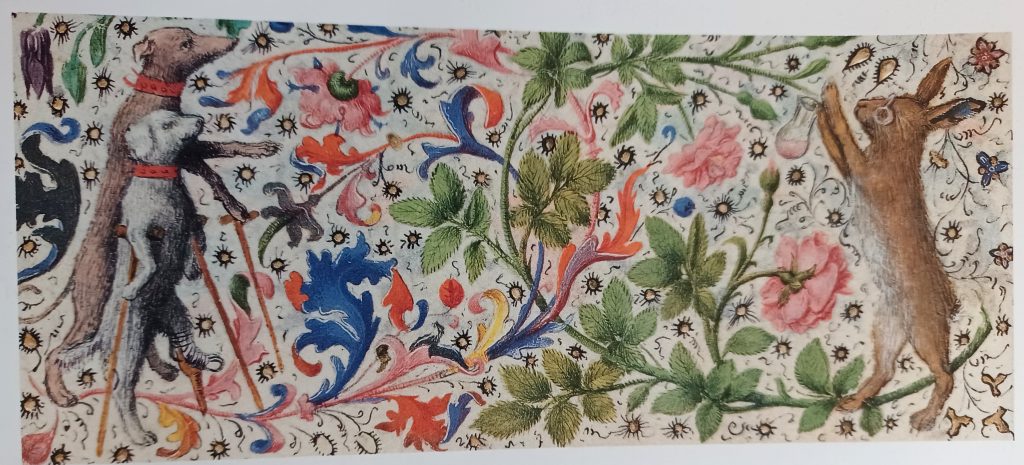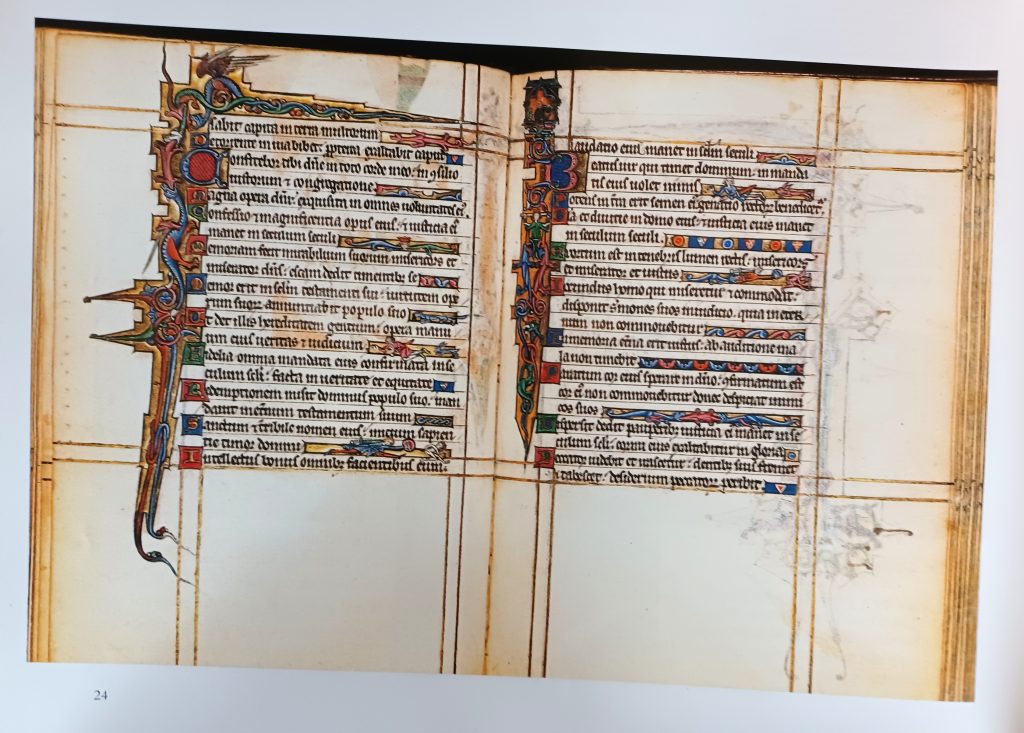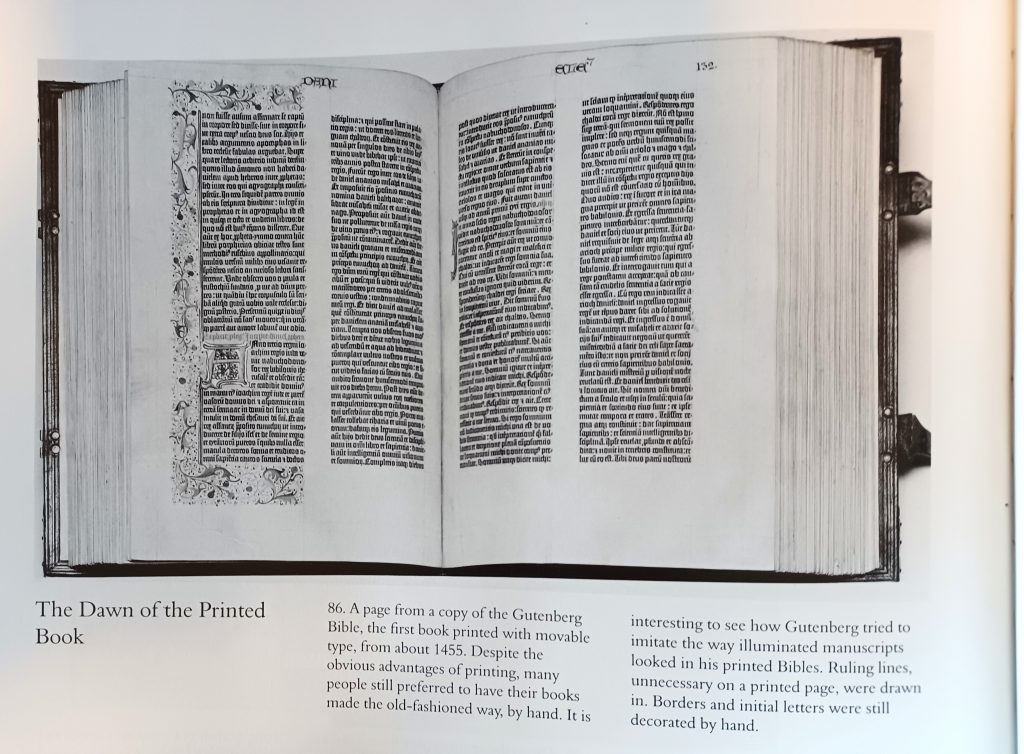Bibles and Bestiaries: A Guide to Illuminated Manuscripts is the seventh book in our Medieval Manuscripts Children’s Book Resources list.
Bibles and Bestiaries: A Guide to Illuminated Manuscripts should, perhaps, have been the first book in this series. But I didn’t know about it until I read Magic in the Margins. This is the book in which W. Nikola-Lisa saw the drawing of a monk watching a mouse eat his cheese. The illustrations are from books in the Pierpont Morgan Library.
“The Library’s collection of illuminated manuscripts is now considered the finest outside of Europe. In addition to making these materials available for scholarly research, the Library regularly includes them in public exhibitions. The purpose of this book is, therefore, twofold: to provide a basic introduction to the art and history of manuscript illumination and to share the Library’s exceptional holdings in this field.”
There are nearly ninety beautiful and fascinating illustrations, the majority in color.

Though this book is relatively brief, and the information is basic, it wasn’t written for children. There is nothing in it that parents should find objectionable, but the reading level will be beyond most readers below about 6th grade. It will be fun to read with your children, and the minutely detailed color illustrations on nearly every page should pique curiosity and prompt discussion.

The first section is a basic explanation of the history of how books were made from the time of the Roman Empire to the Middle Ages.
The next section contains specific information on how the elements of an illuminated manuscript were made; vellum, ruling the page, lettering, ink, gold leaf, and binding. It isn’t tediously technical, but is more detailed than in any of the children’s fiction on our Medieval Manuscripts list.

Next is an explanation of the types of books that were the ancient best-sellers, with more beautiful pictures of psalters, bestiaries, herbals, poetry, and etiquette. And, of course, Bibles.
The last page is about the invention of the printing press. The first printers attempted to make their Bibles look as much like manuscripts as possible. “Eventually, however, the printed books won out over the illuminated manuscript. Then and only then could books really become, as they are today, part of our daily lives.”

It would be ridiculous to deny that the world gained immeasurably from the invention of the printing press, but with new inventions, something is always lost as well. I’m thankful that, with modern printing methods, the old things aren’t completely lost, and can be shared with people everywhere, even if we can’t go to the famous museums and libraries.
This book may be purchased at Amazon here.